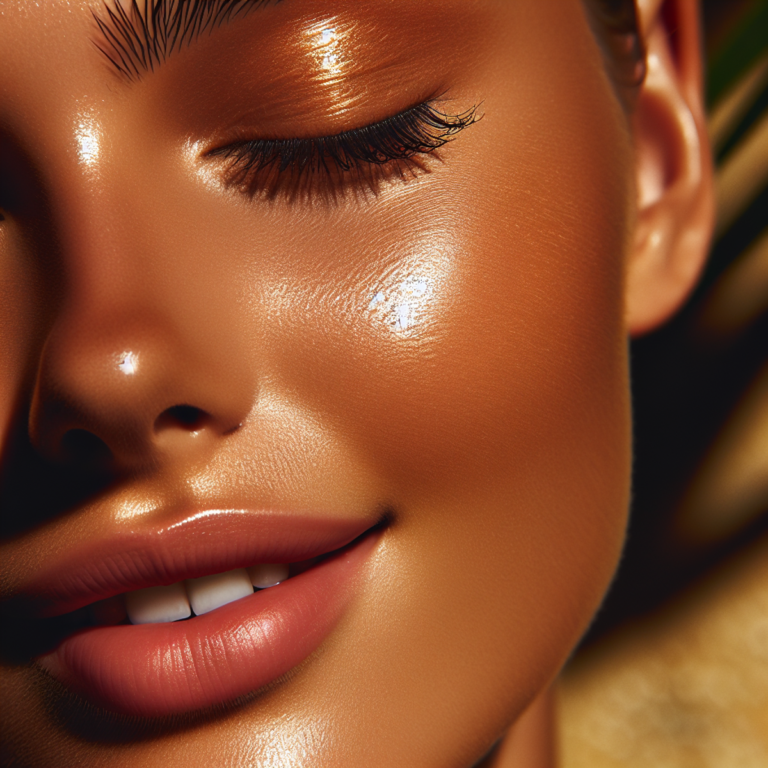What Happens When You’ve Gotten Filler for Years — and Then Stop?

Introduction
Using dermal fillers for a long time can greatly change how someone looks, and deciding to stop using them comes with its own set of consequences. As the effects of fillers slowly wear off, people may notice that their skin is no longer as plump or voluminous as before. This can make natural features like wrinkles, lines, and dark areas more noticeable again, features that were temporarily hidden by the fillers.
Knowing about these possible effects is important for people who have been relying on fillers for a while. They need to carefully think about what could happen if they decide to stop getting filler treatments. That’s why we’re going to discuss:
- How fillers fade over time
- Why creases and folds reappear
- The role of filler dosage in treatment results
- Potential problems when stopping filler use
- Dealing with swelling and puffiness after quitting fillers
- Adjusting to a filler-free look
- Extra things to consider if your lips were overfilled
- Ways to fix lip issues caused by too much filler
- Embracing your natural beauty
By understanding these topics, you’ll have a better idea of what to expect if you’re thinking about ending your long-term use of fillers.
1. Fading Effects and Reemerging Features
How filler gradually fades over time, leading to the reversal of its plumping effects.
When you’ve been getting fillers for years, it’s essential to understand that the plumping effects are not permanent. Over time, the filler gradually breaks down and gets reabsorbed by the body, causing the previously enhanced features to shrink and lose volume. This gradual fading of filler can result in the reemergence of natural facial characteristics that were temporarily altered by the injections.
The experience of seeing previously treated areas shrink and lose volume after stopping filler use.
As the effects of long-term filler use wear off, individuals may notice that the areas where fillers were injected start to revert to their pre-treatment state. For example, if fillers were used to enhance cheek volume or redefine the jawline, stopping filler use may lead to a noticeable decrease in fullness and definition in these areas. The natural contours of the face may reappear as the filler dissipates, which can be a significant adjustment for individuals who have grown accustomed to their augmented appearance.
The gradual fading of filler effects and the subsequent reemergence of natural features can prompt individuals to reconsider their aesthetic preferences and explore alternative approaches to maintaining their desired look.
2. Emergence of Creases, Folds, and Shadows
When you’ve been using dermal fillers for a long time and decide to stop, you may notice the emergence of creases, folds, and shadows on your face. This can be a result of the relationship between filler injections and the temporary masking of facial creases.
One of the effects of fillers is that they plump up the skin, smoothing out any existing creases or wrinkles. However, when you stop using fillers, these previously treated areas may shrink and lose volume, causing the underlying creases to become more prominent. The filler had been providing temporary support to smooth out the appearance of these lines, but without it, they can reemerge (source).
Additionally, the absence of filler can contribute to the formation of new folds and the appearance of shadows on your face. Fillers help to restore lost volume and provide support to areas that have started to sag or droop. When you discontinue filler use, this support is no longer there, and gravity can take its toll. The loss of volume can lead to skin folding or sagging in certain areas, resulting in the formation of new folds (source).
Moreover, shadows may become more noticeable without the plumping effect of fillers. As we age, our faces naturally lose volume, which can lead to hollowed areas. Fillers help to fill in these hollows and create a smoother surface. When you stop using fillers, these areas can become more pronounced as the filler dissipates (source).
Overall, it’s important to understand that stopping filler use can result in:
- The reemergence of creases
- The formation of new folds
- More noticeable shadows on your face
This is because fillers provide temporary support and volume that is lost when you discontinue their use.
3. Impact of Average Dose on Treatment Outcome
The average filler dosage used during each treatment session can have a significant impact on the overall results and how the body reacts to the treatment. This is important to understand when thinking about stopping filler use. Here are some key points to consider:
- Achieving Desired Results: The amount of filler used on average is crucial in getting the desired aesthetic outcomes. When it’s done correctly, it can effectively bring back volume, reduce wrinkles, and improve facial features. Using a consistent dosage helps maintain a natural and balanced look.
- Challenges of Using Too Much: People who have had excessive amounts of filler over a long period may face certain difficulties when they choose to stop getting treatments. Having too much filler can create an unnatural or overly plumped appearance, which can make it harder to transition back to having no filler smoothly.
Understanding how the average dose affects treatment outcomes is crucial for those who are thinking about stopping filler use. It not only impacts the immediate results but also has long-term effects on how the face looks and the health of the skin. Being well-informed about filler dosage choices and understanding what might happen if you decide to stop using it is essential for successfully moving away from long-term filler use.
4. Understanding Potential Issues When Ceasing Filler Use
When people who have had too much filler decide to stop getting treatments, they may experience several potential problems that can affect how their face looks and moves naturally. Here are some important things for these individuals to keep in mind:
- Facial Imbalances: Using filler for a long time can create imbalances in how the face looks, with some areas being overfilled while others naturally lose volume. So when someone stops using filler, these unevenness may become more noticeable and might need special attention and possible corrective actions.
- Facial Mechanics and Muscle Movement: Continuous use of fillers can affect how the face naturally moves, including the movement of muscles and expressions. Having filler in certain areas might limit muscle mobility, leading to changes in how the face moves and looks overall once the filler is stopped.
- Natural Expressions: Fillers can change how facial expressions are shown, especially when they’re used too much or inappropriately. This means that people who have been using fillers for a long time might notice that their natural expressions have been influenced by the filler, and stopping its use could reveal subtle changes in how their face moves.
These potential issues show why it’s important to think carefully about the long-term effects of using filler and to make well-informed choices about how long and how much treatment is needed. Understanding how filler treatments can affect facial appearance and movement is crucial for those who are thinking about stopping long-term use of fillers.
5. Coping with Distension and Bulkiness After Stopping Fillers
Long-term use of dermal fillers can have a lasting impact on the face, even after you decide to stop treatment. One of the potential effects is the phenomenon of filler integration with surrounding tissues, which may result in post-treatment distension that persists even after stopping filler use. This can lead to facial bulkiness and a less natural appearance.
Here are some strategies for managing and reducing facial bulkiness associated with long-term filler effects:
- Massage: Gentle massage techniques can help redistribute the filler and encourage absorption into surrounding tissues. This study provides insights into effective massage techniques that could help reduce the appearance of bulkiness and promote a more natural appearance.
- Lymphatic drainage: Lymphatic drainage massage can help stimulate lymphatic flow and reduce swelling in the face. This technique involves gentle, rhythmic movements that help remove excess fluid and toxins from the tissues. Consider seeking an appointment with professionals who specialize in lymphatic drainage massage like those at InjectZen.
- Cooling treatments: Applying cold compresses or using cooling devices on the treated areas can temporarily reduce swelling and inflammation. This resource on cosmetic rhinoplasty explains how cooling treatments can alleviate facial bulkiness and promote a more sculpted look.
- Hyaluronidase: In some cases, if the bulkiness persists despite massage and other conservative measures, your dermatologist or plastic surgeon may recommend hyaluronidase injections. Hyaluronidase is an enzyme that helps dissolve hyaluronic acid fillers, allowing them to be absorbed by the body more quickly. However, it’s crucial to consult with a qualified medical professional before considering this option.
- Time: It’s important to remember that the effects of long-term filler use may take time to fully resolve. As your body naturally metabolizes the remaining filler, you may notice a gradual reduction in facial bulkiness over several months. This research paper provides further insights into managing complications associated with fillers.
It’s crucial to consult with a qualified medical professional before attempting any of these strategies on your own. They will be able to assess your specific situation and provide personalized recommendations for managing any post-filler effects.
6. Transitioning to a No-Filler State: Challenges and Considerations
Transitioning to a no-filler state after years of normal filler use can be a challenging process. Here are some key points to consider:
1. Smoothly transitioning
For individuals who have used dermal fillers conservatively, the transition to a natural, no-filler appearance may be relatively easier. Since their filler use has been minimal, the effects of stopping may not be as dramatic. They may notice some changes in their facial features as the filler gradually fades, but these changes are generally manageable.
2. Difficulties in complete removal
Completely removing all traces of filler from the face can be difficult, especially with certain product formulations. Some fillers, such as hyaluronic acid-based fillers, can be partially dissolved using hyaluronidase, which breaks down the filler material. However, complete removal is not always possible or recommended, as it can lead to other aesthetic issues or cause damage to surrounding tissues. Therefore, it’s important to approach the transition process with realistic expectations.
3. Accepting natural changes
As you transition to a no-filler state, it’s important to embrace and accept the natural changes that occur. Your face may not look exactly as it did before you started getting fillers. Aging and other factors can also contribute to changes in your facial appearance over time. Understanding that achieving a completely “filler-free” look may not be possible or desirable can help you navigate the transition more smoothly.
4. Alternative anti-aging approaches
Instead of relying heavily on fillers, consider exploring alternative anti-aging approaches that focus on skin health and overall well-being. This could include maintaining a consistent skincare routine, protecting your skin from sun damage, staying hydrated, getting enough sleep, and adopting a healthy lifestyle with proper nutrition and exercise. These factors can contribute to a more youthful appearance and help support your natural beauty.
By considering these challenges and embracing the changes that come with transitioning to a no-filler state, you can navigate this process with confidence and grace. Remember, everyone’s journey is unique, and it’s important to make informed decisions based on your individual goals and desires.
7. Special Concerns for Overfilled Lips: Migration, Tissue Damage, and Aging Effects
Using dermal fillers in the lips for an extended period of time can cause specific issues when the treatment is stopped:
- Filler Migration: As time goes on, filler in the lips may move from its original position, resulting in an abnormal or “shelf-like” lip shape. This movement can cause the filler to spread outside the lip border and into the area between the lips and nose, changing the natural shape of the lips.
- Tissue Damage and Speeding Up Aging: Continuous stretching of lip tissues due to fillers can cause permanent damage to the tissues and make them age faster. The constant pressure and expansion caused by long-term use of fillers can lead to loose or wrinkled tissues, as well as an uneven look in the lips.
Dealing with these concerns requires careful thinking and expertise to ensure a smooth and successful transition away from long-term use of fillers.
Addressing Lip Issues Caused by Overfilling: Treatments and Solutions
When it comes to addressing lip issues caused by overfilling, there are several treatment options available that can help resolve these problems. Here are some key points to consider:
1. Dissolving overfilled lips
One of the most effective ways to address overfilled lips is through the use of hyaluronidase, an enzyme that breaks down hyaluronic acid fillers. By injecting hyaluronidase into the overfilled areas, the excess filler can be dissolved, allowing the lips to return to their natural state. This treatment option is particularly beneficial for individuals who have experienced filler migration or are unhappy with the appearance of their overfilled lips.
2. Conservative doses of lip filler
For individuals who still desire some augmentation in their lips but want a more natural look, using conservative doses of lip filler can be a suitable option. Studies have shown that the lip filler standard is often excessive, leading to overfilled lips. By strategically injecting smaller amounts of filler, a skilled injector can enhance the lips while maintaining a balanced and proportionate appearance. This approach allows for subtle improvements without the risk of further overfilling or distorting the lip contour.
3. Surgical lip lift procedures
In cases where there is significant tissue damage or stretching due to prolonged filler use, surgical procedures such as a lip lift may be considered. A lip lift involves surgically removing excess skin from the upper lip area, resulting in a more lifted and youthful appearance. This procedure can help address issues such as permanent tissue expansion and laxity that may have occurred as a result of long-term filler use.
It’s important to note that the best course of action will depend on each individual’s specific situation and desired outcome. Consulting with a qualified and experienced cosmetic professional is crucial to determine the most appropriate treatment approach for addressing lip issues caused by overfilling.
Remember, it’s always important to prioritize your natural beauty and make informed decisions when it comes to any cosmetic procedures. Understanding the potential risks and benefits associated with long-term filler use, as well as the available treatment options for resolving any issues that may arise, will help you make the best choices for your aesthetic goals.
Embracing the Natural Beauty
1. Prioritize Natural Beauty
It’s essential to embrace and prioritize your natural beauty, appreciating the unique features that make you who you are. Rather than solely relying on fillers for anti-aging solutions, consider alternative approaches that promote and enhance your natural appearance.
2. Informed Decision-Making
Making informed decisions about long-term filler use is crucial. By understanding the potential effects of extended filler usage and being aware of the consequences when choosing to stop treatments, individuals can navigate their aesthetic journeys with confidence and mindfulness.
By prioritizing natural beauty and making informed choices, individuals can cultivate a harmonious relationship with their appearance, embracing authenticity and celebrating the evolving nature of beauty.










